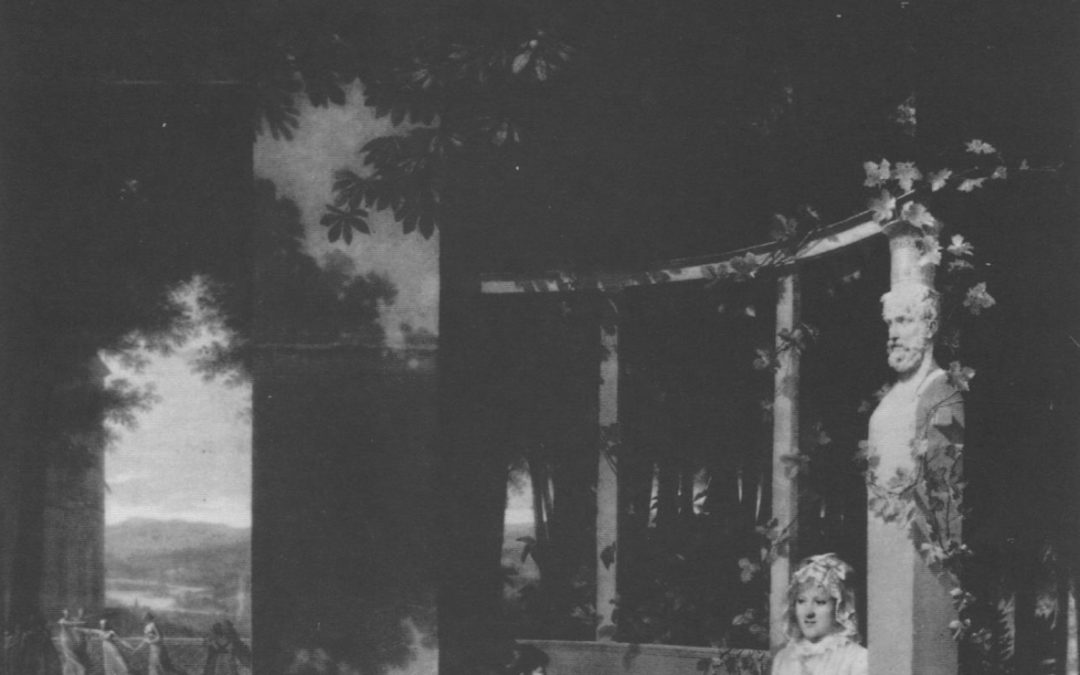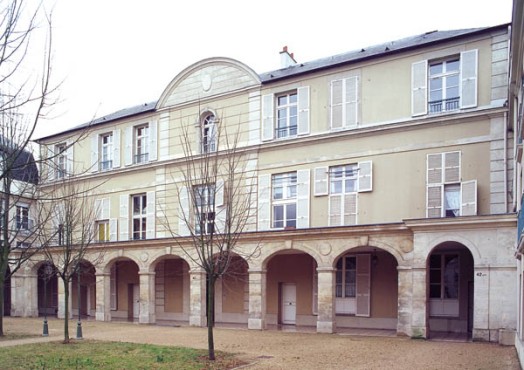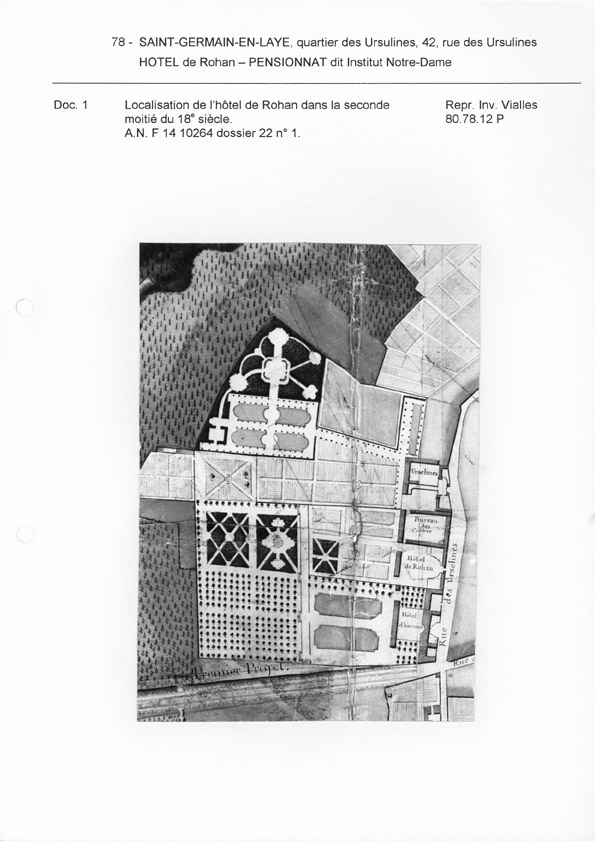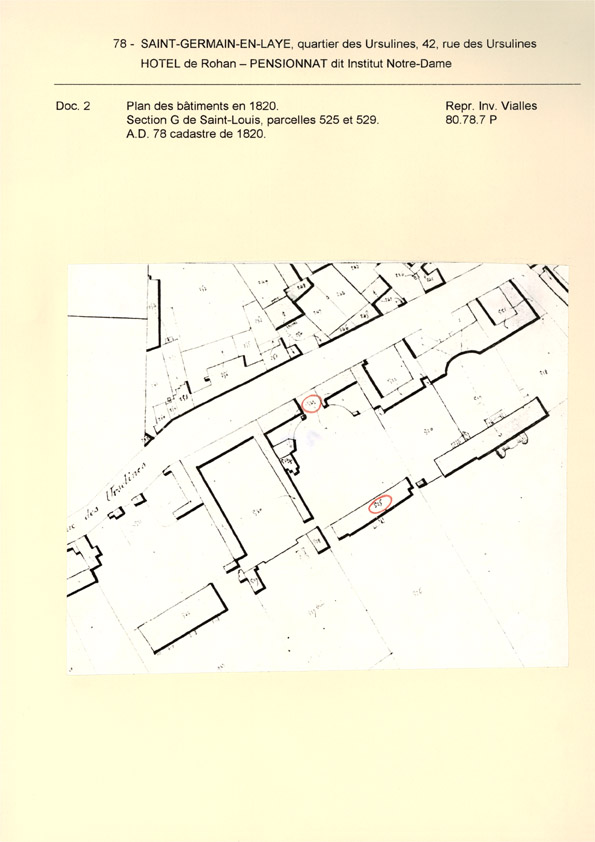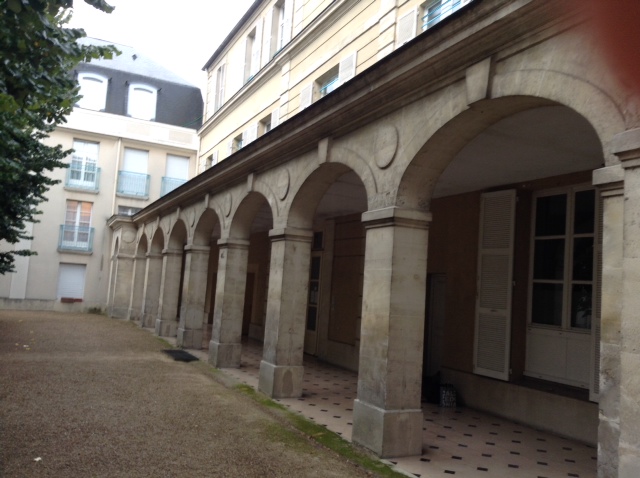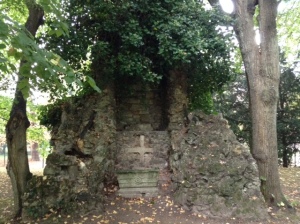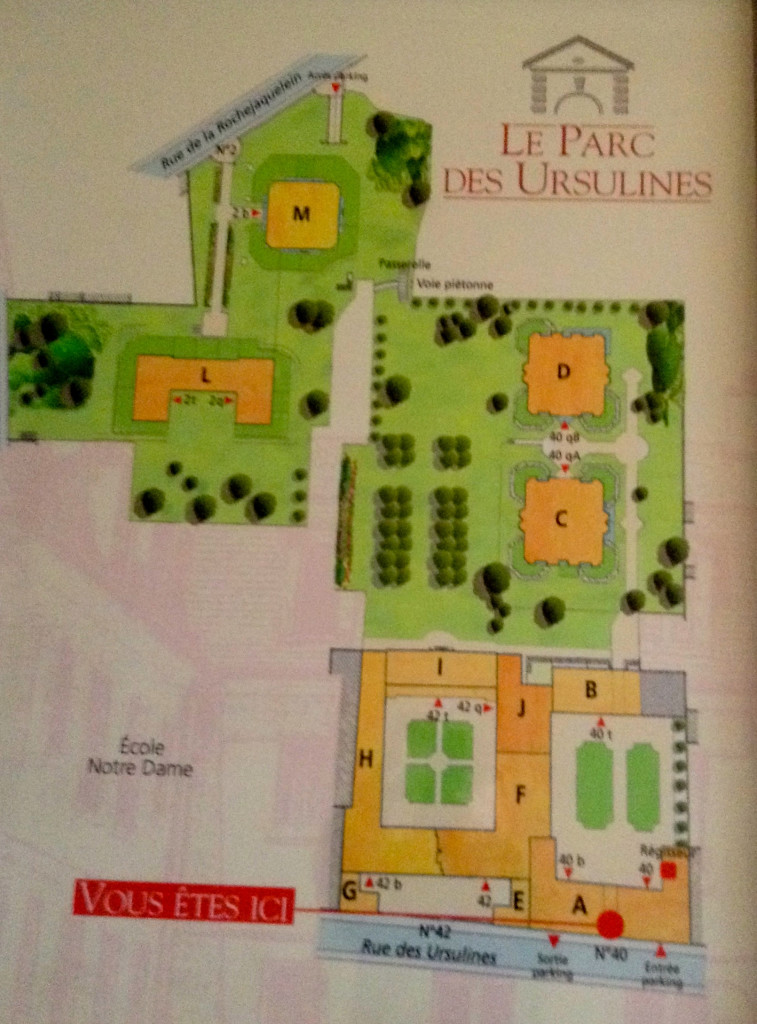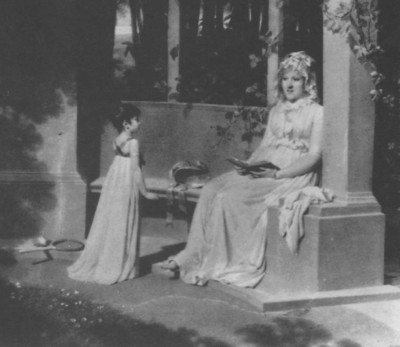
On July 31, 1794, Madame Campan opened her boarding school for girls on rue de Poissy in Saint-Germain-en-Laye, a town not far from Paris.
In the spring of the following year, on May 25, she rented Hôtel de Rohan on 42, rue de l’Unité—now 42, rue des Ursulines—opening the school there on July 1, 1795.
Two months later, on September 1, Josephine de Beauharnais (soon to marry and become Josephine Bonaparte) enrolled her daughter Hortense and her niece Émilie. Her son Eugène was enrolled in a school for boys next door.
Images of the former Hôtel de Rohan
The French government provides all sorts of information on historical sites. This one is a treasure of information and images:
Here is a map detail from the mid-18th century:
And another one from 1820:
The inner courtyard (mid-19th century):
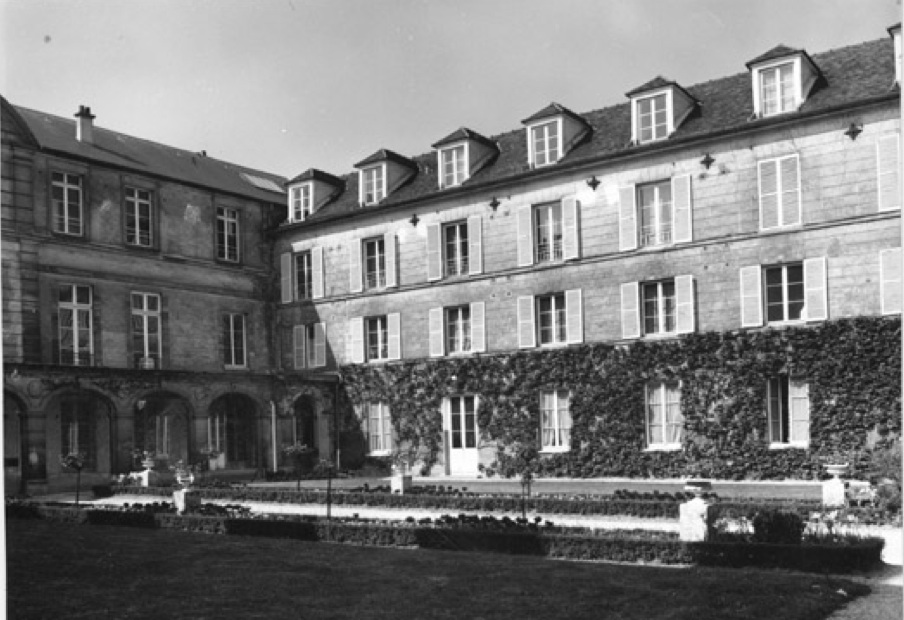
The basin in the entry:
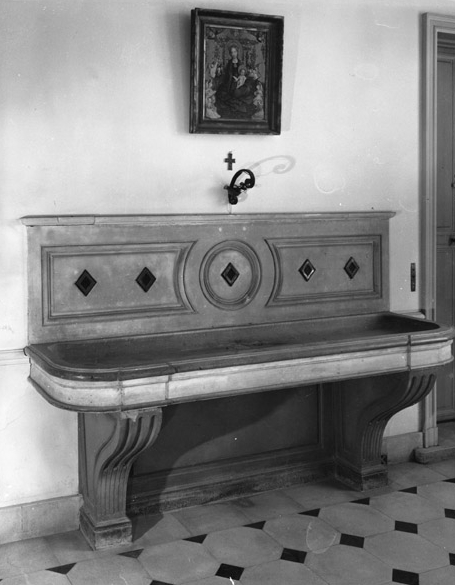
You can see it filled with plants here:
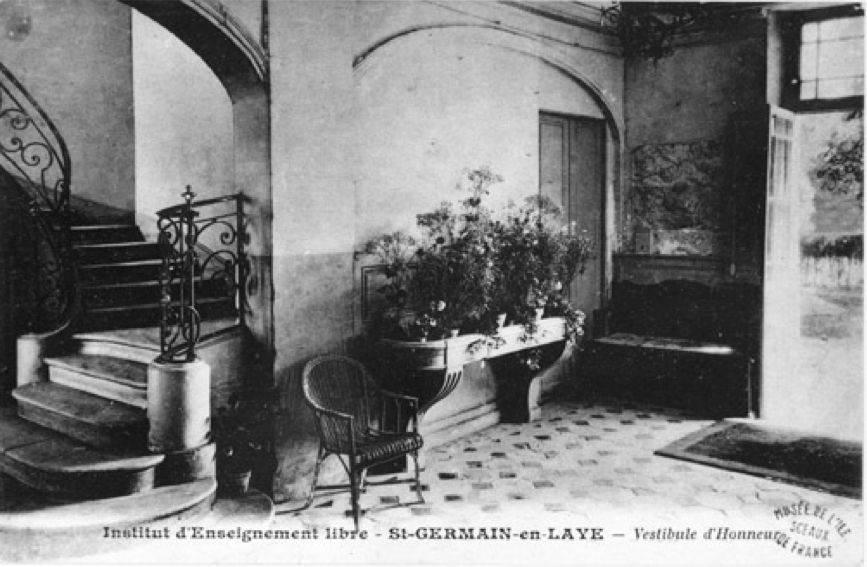
And here’s a detail of the staircase:
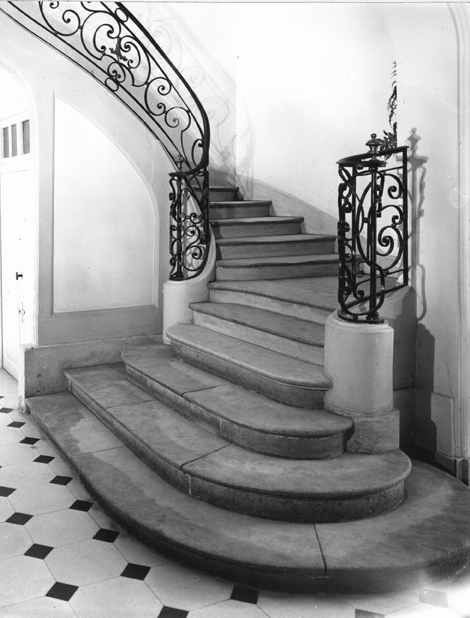
The “school” today
The former Hôtel de Rohan is now an apartment block. On a research trip in 2014, a former resident of the apartments was kind enough to show me in to see what remains of Madame Campan’s school.
Much of it is new, but there are some remnants of the former Hôtel de Rohan:
In the back garden, there was this intriguing bit of antiquity:
A bit of the former chapel, perhaps? One can only guess.
Here is the layout of the apartment complex, “Le Parc des Ursulines.” The photo of the arches above are where the “I” is on this plan. The grotto is in the garden beyond.
On the name of the school
How was Madame Campan’s school referred to at the time? Here are two possibilities:
L’Institut National des Jeunes Filles/National Institution for Young Women
I’ve also seen (but only in English): National Institution for the Education of Young Women.
l’Institut national de Saint-Germain/The National Institution of Saint-Germain
I have doubts about this last name because during the Revolution the name of Saint-Germain-en-Laye had been changed to Montagne-Bon-Air. It was changed back to Saint-Germain-en-Laye 28 février, 1795, but would Madame Campan have been so bold as to use the former aristocratic name immediately?

